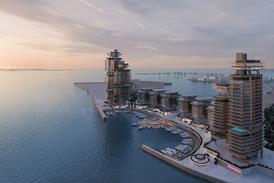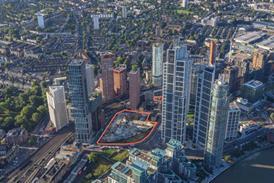- Home
- Intelligence for Architects
- Subscribe
- Jobs
- Events

2025 events calendar Explore now 
Keep up to date
Find out more
- Programmes
- CPD
- More from navigation items
Grenfell’s demolition: loss, memory, and a determination that it must never happen again

Eleanor Jolliffe reflects on the planned demolition of Grenfell Tower and the tensions between safety, remembrance, and accountability
Grenfell Tower is set to be demolished over the next two years, to the concern of some survivors and relatives of the victims of the disaster. They worry that without the visible reminder of the tragedy, it will be ‘out of sight, out of mind’. The demolition of the tower has largely been explained by safety concerns, as the damaged structure is continuing to deteriorate and becoming unsafe.
This all seems very sensible, but I can understand the feelings of those whose lives have been impacted by the fire. For them, the stark reminder on the London skyline must seem necessary – a towering, plastic-swathed and deeply uncomfortable symbol to the construction industry and to the government of the greed and incompetence, even if unintentional, that led to their loss. I would want it to stay there too.
…
This content is available to registered users | Already registered?Login here
You are not currently logged in.
To continue reading this story, sign up for free guest access
Existing Subscriber? LOGIN
REGISTER for free access on selected stories and sign up for email alerts. You get:
- Up to the minute architecture news from around the UK
- Breaking, daily and weekly e-newsletters
Subscribe to Building Design and you will benefit from:

- Unlimited news
- Reviews of the latest buildings from all corners of the world
- Technical studies
- Full access to all our online archives
- PLUS you will receive a digital copy of WA100 worth over £45
Subscribe now for unlimited access.






